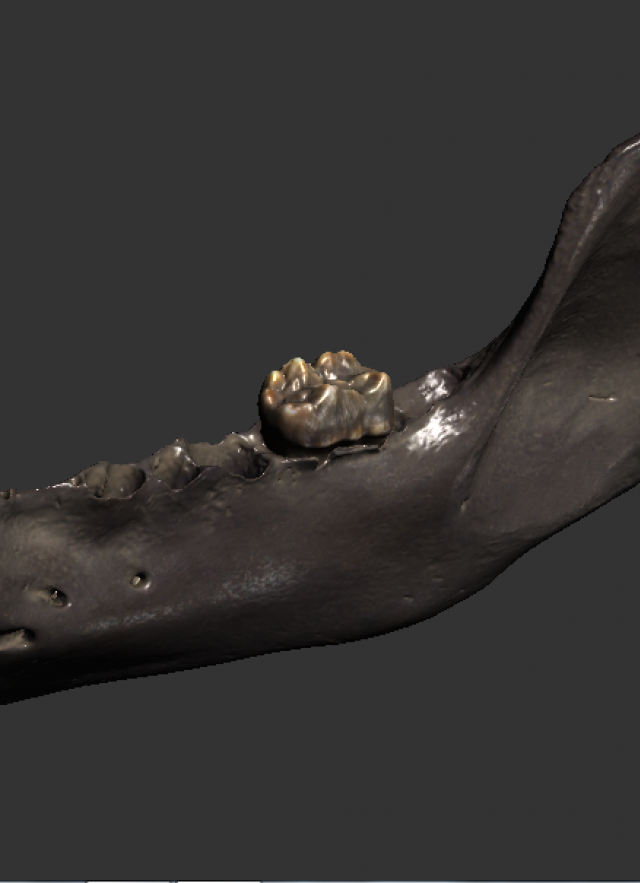
Where did the California grizzly bear go?
It's easy to find a grizzly bear in California: you can see them on the state flag, on t-shirts, and tourist maps - anywhere, that is, but actually living in the state. The last California grizzly was seen near Yosemite in 1924, going extinct after decades of persecution and hunting bounties. Some have estimated that California was home to as many as 10,000 bears prior to the Gold Rush in 1848. Because California grizzlies went extinct so quickly, there are very few natural history notes available, and there are fewer than 100 historical skins and skeletons in existence. As a result, fossils provide an important baseline for understanding the ecology, abundance, and uniqueness of this animal. The 3D model of a grizzly bear skull below [catalog # LACMHC 133] represents a small female that was recovered from Pit 10 in 1914 and was described as an "indubitable specimen" of the species Ursus arctos. Radiocarbon dates on an associated femur suggest this individual lived ~5-6,000 years ago, during the Holocene. Our record of grizzlies at Rancho La Brea only starts after the arrival of humans and the extinction of megafauna, such as its cousin, the short-faced bear (Arctodus simus).
By studying the remains of grizzlies at Rancho La Brea, we can better understand its pathway to extinction and potentially imagine a future with reintroduction. ~ Dr. Alexis Mychajliw
Research Associate Dr. Alexis Mychajliw is studying the stable isotopes of California’s last grizzly bears with the California Grizzly Research Network. She employs toolkits that can accommodate data from fossil, historic, and modern specimens, such as stable isotopes, DNA, morphology, and species distribution models. Natural history collections provide invaluable contributions to her research. Learn more about her work at Insectivora.